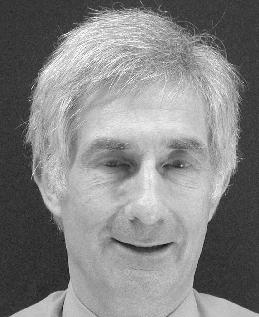Chris Taylor

Chris Taylor has been involved in Image Analysis and Computer Vision since beginning his PhD in 1967. He originally came to Manchester to do a Degree in Physics in 1964, and has remained ever since. From the beginning he was involved in developing novel hardware and software for Image Analysis. His PhD, entitled General Methods of Analysing Biomedical Images, involved building image digitisation equipment and writing segmentation software on a DEC PDP8.
On completing his PhD he became an RA, and soon a Lecturer in the Department of Medical Biophysics. Since at the time there was little commercial equipment available, he was involved in developing integrated software and hardware systems for image acquisition and analysis. With colleagues he designed and built the Magiscan 1 and 2, which used custom built microprocessors to achieve extremely fast processing speeds – it was not until the mid-90s that general-purpose computers began to achieve similar speeds. The Magiscans formed an important commercial product for Joyce-Loebl Ltd, an industrial collaborator.
In 1977 he became Manager of the newly formed Wolfson Image Analysis Unit, which aimed to develop sophisticated image analysis applications for the Magiscan machines. The Unit developed pioneering chromosome analysis systems, an asbestos counting system that was adopted by the Health and Safety Executive as a standard and a system for inspecting brake assemblies which remained in continuous use on a VW production line for over 10 years.
In 1990 he was awarded a chair, becoming a Professor of Medical Biophysics. His interests turned to using trained statistical models to interpret images. His group’s pioneering work on statistical models of shape and appearance has proved very influential. Papers about the work have won numerous prizes and the approaches have been adopted internationally. Chris has been keen to ensure that computer vision is used to solve real problems, has been involved in numerous collaborations with industry, and has formed several spin-off companies including Kestra Ltd (industrial inspection), imorphics Ltd (medical image analysis) and Genemation Ltd (facial modelling).
As well as his research work, he has been very active in promoting the subject of Computer Vision. He has been active on many committees and associations involved in healthcare and computer vision. In 1988 he became Chair of the British Pattern Recognition Association, and was instrumental in the merging of that organisation with the Alvey Vision Club to form the BMVA in 1990. Chris was the first Chairman of the BMVA, and has been closely involved ever since. He remains the Company Secretary.
In 2000 he was awarded the OBE for services to health and his work on the Foresight committees. He has recently become the Head of the School of Computer Science at the University of Manchester.